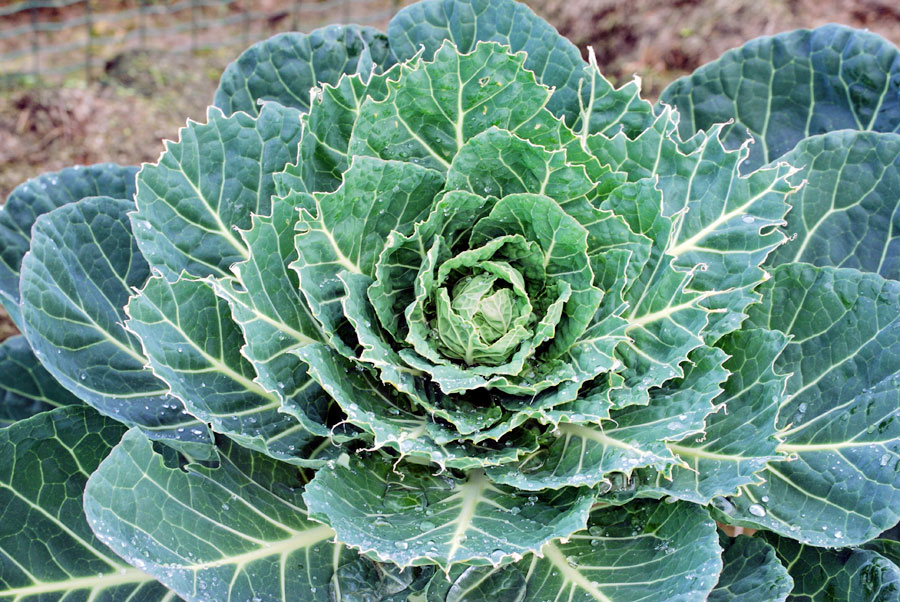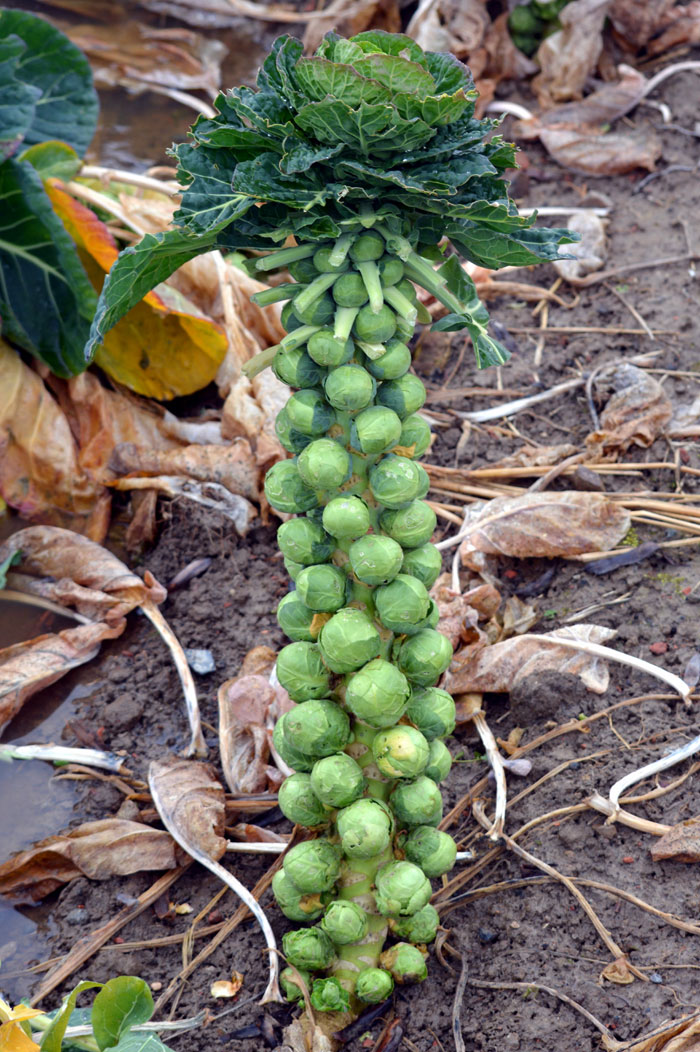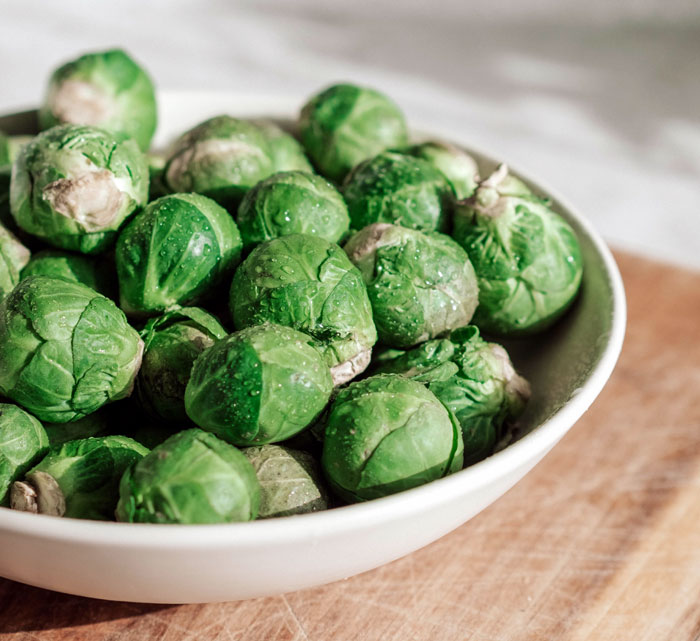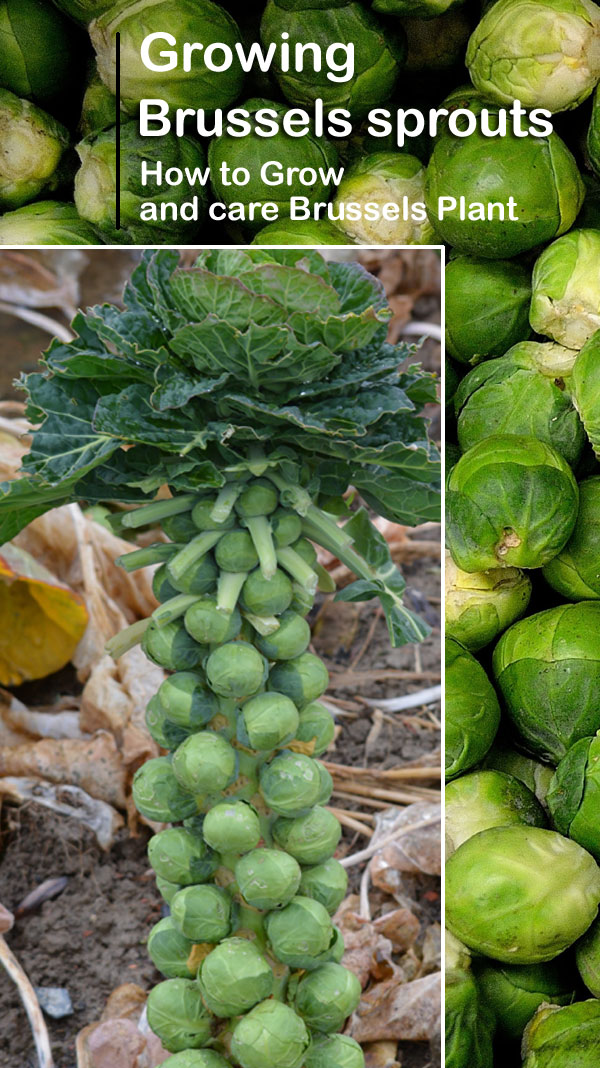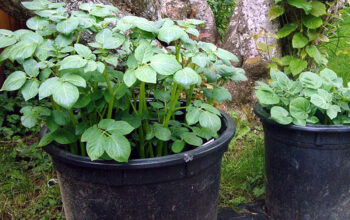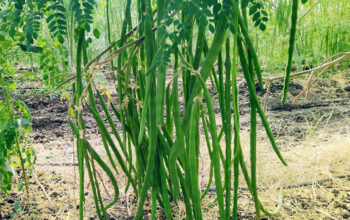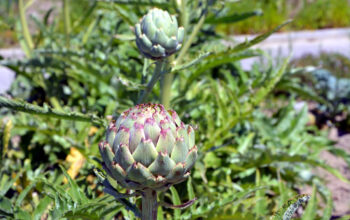Brussels Plant (Brussels sprouts)
Brussels plant is a form of cabbage in the mustard family Brassicaceae that are grown in Europe and North America for their edible buds, called sprouts. Brussels sprouts are usually eaten cooked, and the small, young sprouts have a more delicate flavor than the aged ones. Among the nutrient-rich compounds of the vegetable are fiber, folic acid, manganese, and vitamins C, A, and K. For growing brussels sprouts cool, and a long growing is required.
The plant closely resembles the common cabbage at its seedling stage and in its early development. The main stems, however, grow to a height of 60 to 90 cm. Along the stem, axillary buds develop into small heads comparable to heads of cabbage, but each measuring only 25 to 40 mm in diameter. Green sprouts are the most common, but red-leaved varieties have also been developed. While Brussels sprouts are commonly grown as annuals, they are biennial plants that produce yellow flowers with four petals if kept for two seasons. The seeds are produced in silique fruits.
Overview Brussels Plant
Scientific Name Brassica oleracea
Common Name Brussels sprouts
Plant Type Vegetable (Annual)
Sun Requirements Full sun
Soil well-drained, loam soils
Soil pH 6 to 7
Season Spring, Summer
Zone 2-11
Growing Brussels sprouts and Care
Growing them requires a long growing season (80–100 days). They are a cool-season crop, which means they grow best when cultivated for a fall or early winter harvest. It is customary to plant Brussels sprouts in their own separate seedbed instead of on the main vegetable plot. Then, transplant them as soon as space becomes available in early summer. Brussels sprouts should be planted 6–10 weeks before the first frost is predicted. Growing your own transplants is possible if you plant seeds indoors about 3 to 4 weeks before you plan to transplant outdoors; the seedlings should be about 3 inches tall before being transplanted outdoors.
Sunlight
As with many vegetables, Brussels sprouts benefit from a minimum of six hours of sunlight a day. The sprouts will grow more slowly under too much shade.
Soil
Growing Brussels sprouts requires soil that is slightly acidic to neutral, fertile, well-drained, moist, and has plenty of organic matter. In order to thrive, Brussels sprouts need soil that is firm but not compacted. Lightly pat the soil down. 6.5 to 7.5 is the ideal pH level for Brussels sprouts. Maintaining the moisture they need for their intense growth can be done by adding organic matter to the soil.
Watering
One inch of water is needed every week to keep Brussels sprouts healthy. You should mulch around plants during the summer to prevent soil moisture from evaporating and keep the soil cool. You should water generously and regularly during the summer. Make sure that the soil around the sprouts remains moist but not soaked.
Temperature and Humidity
Growing Brussels sprouts from seed are best done in cool weather, but they will sprout at soil temperatures of 45 degrees and 80 degrees. Despite a couple of days below freezing, they’ll grow well. Light frost even enhances the flavor. Warm-weather sprouts will be bitter and flimsy—they will not grow well in hot, dry weather. When the conditions are right, they can even survive through the winter if the conditions are right.
In order for plants to thrive, relative humidity must be between 80 and 90 percent.
Fertilizer
A constant supply of nitrogen is essential for these plants; this can be achieved either by applying compost, manure, or nitrogen fertilizer as a side dressing. Side dressings are simply a way to apply nitrogen fertilizer around the base of the plant. The first time you transplant the Brussels sprouts into the garden, fertilize them four weeks later and fertilize them again 10 weeks later. Pour 1/2 cup of 21-0-0 fertilizer down each 10-foot row, approximately 6 inches from the plant base. Fertilizer should be applied after watering to ensure nutrients are absorbed by the soil. The use of nitrogen-rich fertilizers such as blood meal, cottonseed meal, or composted manure is advisable.
Pruning
You should stop trimming the lower leaves three weeks before harvesting sprouts. Cut the topmost vertical stalk straight across and above a leaf by using the pruners—about an inch to two inches. When pruning Brussels sprouts, this is the best technique for tricking the plant into maturing all at once. Regardless of how you intend to prepare Brussels sprouts, you should trim them first. read also.
Read also:
Use of NPK fertilizer. fertilizer. 10 best vegetables to grow in pots. Long blooming summer flowers. How to grow ZZ plants. Growing Raspberries in containers. Growing and caring of rutabagas. How to grow cabbage in containers. 8 Perrinals vegetables you can plant ones. Pointed gourd cultivation. Blue chalk sticks grow and care. Broccoli growing in containers. Best flowers for bees and butterflies.
For pin:

